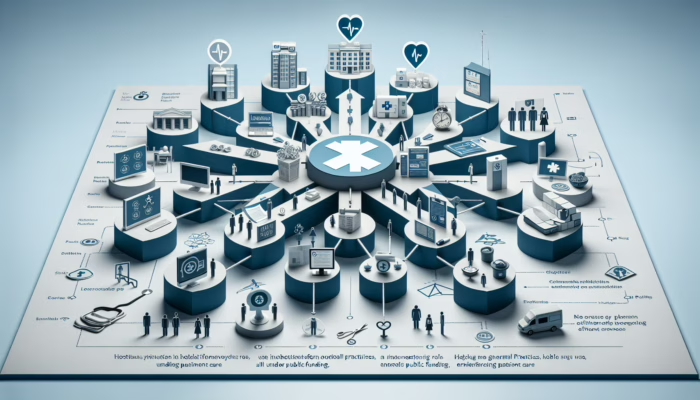Last Updated on 30/05/2025 by Admin
Transforming Daily Life: Insights into the Effects of Hearing Loss
Strategies for Overcoming Communication Barriers in Social Settings
The intricate art of conversation relies heavily on the clarity of sound. When individuals are faced with hearing loss, this delicate balance is significantly disrupted. Those experiencing diminished auditory capacity often struggle to pinpoint the source of sounds, making social interactions particularly challenging. Imagine attending a vibrant festival where the mix of laughter, multiple conversations, and ambient sounds creates a rich tapestry of noise. For someone dealing with hearing loss, this lively atmosphere can morph into an overwhelming challenge, making it difficult to engage fully in conversations and enjoy the event. The joy of shared experiences often feels out of reach, highlighting the need for greater empathy and understanding from those around them.
The nuances of verbal communication, such as tone, inflection, and vital non-verbal cues, become increasingly elusive for those affected. Misunderstandings can arise when individuals misinterpret the intentions behind spoken words, potentially straining personal relationships. Routine interactions, such as those in a busy café, can escalate into frustrating challenges, with frequent requests for repetition creating discomfort for both parties. This scenario underlines the significant hurdles faced by those with hearing impairments, emphasising the importance of fostering empathy and patience in social interactions.
In multicultural environments, such as international gatherings where various languages are spoken, the impact of hearing loss can amplify feelings of exclusion. The inability to participate in meaningful dialogues can render individuals mere spectators, heightening feelings of loneliness. This dynamic underscores the profound repercussions that hearing loss can have on interpersonal communication, ultimately reshaping the fabric of social interactions and relationships.
Ensuring Safety: Addressing Concerns Associated with Hearing Loss
Navigating daily environments becomes increasingly precarious for individuals unable to detect essential auditory signals. Those with hearing loss face heightened safety risks, as their capacity to recognise critical alerts such as alarms, car horns, or sirens is significantly compromised. Consider the scenario of walking through a bustling urban street; for most people, the sounds of approaching vehicles provide an instinctive warning, ensuring safe passage. However, for individuals with compromised hearing, sirens may fade into the background noise, turning ordinary situations into potentially dangerous encounters.
This concern escalates dramatically in various contexts, from crowded markets in Southeast Asia to busy subway stations in Europe. The inability to hear an approaching train or a cyclist can lead to life-threatening situations. Lacking auditory cues necessitates heightened vigilance and constant scanning of the environment, creating an overwhelming burden that can result in heightened anxiety and stress.
In residential settings, the absence of auditory alarms, such as smoke detectors or carbon monoxide alerts, poses a significant danger. Many may not realise that their hearing loss not only affects their social interactions but also compromises their safety at home. This reality highlights the critical importance of integrating visual alerts and modifying living spaces to cater to the specific needs of individuals with hearing impairments, ensuring their well-being and security.
Understanding the Impact of Hearing Loss on Environmental Navigation
Disorientation is a prevalent issue for those experiencing hearing loss, particularly in unfamiliar environments. The ability to interpret spatial cues, such as the direction and distance of sounds, plays a crucial role in our navigational abilities. This challenge becomes pronounced in complex settings like airports or sprawling shopping malls, where auditory signals are essential for orientation and navigation.
For instance, while an individual with normal hearing can easily locate a terminal gate by listening to announcements and observing the movements of fellow travellers, someone with hearing loss may struggle significantly to find their way. The rich auditory landscape—filled with directional sounds—provides essential context for mapping out spaces; without adequate auditory input, this resource is entirely lost. Consequently, individuals may experience increased anxiety and a sense of vulnerability in new environments, making travel or exploration feel more daunting than enjoyable.
In natural settings, such as hiking trails or parks, the lack of sound awareness can disrupt one’s connection to the environment. The gentle rustling of leaves or the cheerful chirping of birds typically enriches these experiences, providing clues about nearby wildlife or environmental changes. Without these auditory signals, individuals may not only feel disconnected from nature but also miss crucial indicators that enhance their outdoor adventures and overall enjoyment of the natural world.
Exploring the Emotional and Psychological Dimensions of Hearing Loss
The invisible burden of hearing loss extends well beyond physical challenges, profoundly affecting emotional and psychological well-being. It is vital to acknowledge that the struggle for effective communication can trigger a cascade of negative emotions, including feelings of isolation and frustration. Imagine attending a lively gathering where laughter and conversation flow freely; for someone with hearing loss, such vibrant moments can be overshadowed by a sense of being an outsider. This emotional disconnect can lead to profound loneliness, prompting individuals to withdraw from social situations to mitigate the stress associated with communication breakdowns.
The psychological ramifications are significant. As inherently social beings, our well-being is intricately tied to our connections with others; when these connections become strained, mental health may deteriorate. Feelings of inadequacy can emerge, potentially resulting in depression and anxiety. The continuous effort required to decipher sounds can lead to mental fatigue, making engagement in daily activities and fully enjoying life daunting challenges.
Globally, the stigma surrounding hearing loss can exacerbate these negative feelings. In various cultures, there may be a lack of awareness or understanding regarding the challenges faced by individuals with hearing impairments, intensifying feelings of alienation. Thus, addressing the emotional and psychological aspects of hearing loss is crucial. Comprehensive support systems and resources that promote social inclusion and mental wellness for those affected by these challenges are essential.
Investigating the Cognitive Consequences of Hearing Loss
Improving Attention and Focus for Better Cognitive Function
Cognitive functions are closely linked to our sensory experiences, and hearing loss can significantly alter how the brain processes auditory information. The struggle to filter out background noise creates a considerable obstacle for individuals with hearing impairments, detrimentally affecting their focus and attention. In bustling environments, such as cafés or busy streets, those with hearing loss must exert substantial effort to concentrate on one conversation while simultaneously drowning out the distracting hum of daily activities.
This persistent struggle can lead to cognitive overload. The brain, in its quest to decode fragmented sounds and differentiate speech from background noise, faces increased demands that ultimately diminish overall cognitive performance. Research has shown that the mental resources required to navigate complex auditory landscapes can lead to fatigue, shorter attention spans, and heightened levels of frustration.
For example, in educational settings, students with hearing loss may find it challenging to keep pace during lectures, feeling overwhelmed by the necessity to focus intently to capture essential information. This can impede learning and retention, as the cognitive load becomes a barrier to effectively processing and remembering content, underscoring the urgent need for tailored educational strategies.
Moreover, as individuals age, the impact of hearing loss on attention and focus can compound, potentially leading to cognitive decline. Understanding the intricate relationship between hearing loss and cognitive function is vital, as early intervention and adaptive strategies can help mitigate these effects and enhance overall cognitive health.
The Vital Connection Between Hearing and Memory
The profound relationship between hearing and memory is undeniable; auditory memory plays a crucial role in our ability to retain and recall information effectively. Individuals experiencing hearing loss may notice a declining capacity to encode auditory information, resulting in significant challenges in learning and information retention. This issue is particularly prevalent in classroom or training environments, where auditory instruction serves as the primary mode of communication.
When sound processing is impaired, it can hinder the ability to remember instructions, lecture content, or even casual conversations. For instance, a student might struggle to recall key points from a lecture if they could not hear certain phrases or explanations clearly. This affects academic performance and can shake confidence within learning environments, creating a ripple effect that impacts various life areas.
Globally, educational systems are beginning to recognise the necessity for inclusive practices that accommodate diverse learning styles and challenges. This includes integrating technology and alternative teaching methods that emphasise visual learning and assistive technologies, which can significantly aid those with hearing impairments in retaining information effectively.
The implications of diminished auditory memory extend beyond educational settings into professional environments. In workplaces where meetings and discussions are commonplace, individuals with hearing loss may struggle to grasp essential information, leading to decreased job performance and limited advancement opportunities. Addressing these challenges through tailored strategies and support can facilitate better outcomes for individuals navigating learning and memory challenges related to hearing loss.
Understanding Spatial Processing Difficulties Related to Hearing Loss
Spatial processing is a vital cognitive function that enables us to interpret and navigate our surroundings effectively. Hearing loss disrupts this essential function, as the brain heavily relies on auditory cues to create mental maps of spaces and comprehend spatial relationships. When sound perception is compromised, individuals may find it challenging to determine the direction and distance of sounds, leading to confusion and disorientation.
Imagine a crowded public space, like a train station. A person with normal hearing can effortlessly locate the source of an announcement or the sound of an approaching train, using auditory cues to navigate effectively. In contrast, someone with hearing loss may struggle to orient themselves, lacking the necessary sound information to make informed decisions about their movements. This can lead to heightened anxiety, particularly in unfamiliar environments where navigation is critical.
On a global scale, the implications of impaired spatial processing can significantly affect mobility and independence. Individuals may hesitate to travel alone or explore new areas due to the fear of becoming lost or disoriented. This aversion can limit opportunities for personal and professional growth, as individuals may avoid situations that require navigation and awareness of auditory cues.
Emerging research highlights the importance of enhancing spatial processing skills for individuals with hearing loss through targeted training and rehabilitation programmes. Such interventions can empower individuals to adapt to changes in their auditory landscape, fostering confidence and improving their ability to navigate various environments effectively.
The Emotional and Psychological Impact of Hearing Loss
Understanding and Managing Social Withdrawal
Social environments can present significant challenges for individuals with hearing loss, often leading to withdrawal from social situations. The struggle to engage in meaningful conversations and connect with others can create barriers that feel insurmountable. In culturally vibrant settings, such as local markets or community events, the lively atmosphere may become overwhelming for those with hearing impairments, who may feel engulfed by the cacophony of sounds.
As inherently social beings, humans thrive on interaction, and the inability to engage meaningfully can foster feelings of loneliness and isolation. Many individuals may choose to withdraw from social situations altogether, fearing the embarrassment of miscommunication or the fatigue associated with straining to hear. This self-imposed isolation can create a vicious cycle, where withdrawal exacerbates feelings of depression and anxiety, further detaching individuals from their social networks.
Globally, the stigma surrounding hearing loss can intensify these feelings of withdrawal. In some cultures, there may be a lack of understanding or acceptance of disabilities, causing individuals to feel marginalised or misunderstood. It is crucial to cultivate inclusive communities that promote empathy and understanding to effectively address the emotional impacts of hearing loss.
To combat social withdrawal, fostering connections within communities and promoting awareness about hearing loss is essential. Support groups and engaging social activities can create environments where individuals feel safe to express themselves and connect with others who share similar experiences, ultimately enhancing their social well-being and mitigating feelings of isolation.
Addressing Anxiety and Stress Associated with Hearing Loss
The constant effort required to comprehend sounds can generate profound anxiety and stress for individuals experiencing hearing loss. This heightened level of vigilance, necessary for navigating everyday conversations and environments, can lead to mental exhaustion and emotional fatigue. In bustling contexts, such as crowded public transport systems or busy workplaces, the strain of deciphering speech against a backdrop of background noise can feel relentless, causing individuals to exist in a state of perpetual alertness.
Many individuals suffer from anticipatory anxiety regarding social interactions, fearing they will misinterpret conversations or miss critical information. This anxiety may manifest physically through increased heart rates, sweating, or avoidance behaviours, further complicating interactions and perpetuating a cycle of stress and isolation.
Research indicates that prolonged exposure to such stress can have detrimental effects on overall health and well-being. Mental health conditions, including anxiety disorders, may be more prevalent among individuals with hearing loss, necessitating a comprehensive approach to care that addresses both auditory and psychological needs.
Globally, mental health awareness is gradually increasing; however, specific resources tailored to the needs of those with hearing impairments remain limited. Providing access to counselling services, workshops focused on stress management, and coping strategies can empower individuals to better manage anxiety and build resilience in the face of challenges associated with hearing loss.
Boosting Self-Esteem and Confidence in Individuals with Hearing Loss
The challenges associated with altered spatial awareness due to hearing loss can lead to decreased self-esteem and confidence. As individuals contend with the hurdles of communication, their self-image may suffer, leaving them feeling inadequate or less capable in social interactions. The fear of judgment or misunderstanding can deter individuals from participating in conversations or group activities, reinforcing feelings of inferiority.
In diverse cultural contexts, these feelings may be further exacerbated by societal expectations regarding communication. In environments that place a premium on eloquence and verbal expression, individuals with hearing loss may feel marginalised or undervalued. This disconnect can foster a sense of resignation, where individuals shy away from opportunities for personal growth or social engagement.
Building self-esteem and confidence in individuals with hearing loss requires a multifaceted approach. Encouraging open conversations about hearing loss, promoting self-advocacy, and providing opportunities for skill development can empower individuals to embrace their uniqueness and capabilities. Celebrating achievements, regardless of size, can help shift the narrative around self-worth, fostering a more positive self-image.
Community support is vital in this journey. Inclusive environments that celebrate diversity and promote understanding can help individuals feel more accepted and valued, ultimately enhancing their confidence and self-esteem.
Proven Strategies for Adapting to Hearing Loss
Utilising Assistive Devices to Enhance Hearing Capabilities
The integration of assistive devices, such as hearing aids and cochlear implants, can substantially enhance spatial awareness and sound localisation for individuals experiencing hearing loss. These technologies have advanced remarkably, featuring sophisticated capabilities that empower users to navigate their auditory environments more effectively. For example, modern hearing aids equipped with directional microphones allow individuals to focus on sounds originating from specific directions, facilitating engagement in conversations even amidst noisy settings.
Consider a bustling restaurant where the ambient noise can be overwhelming. Hearing aids have the potential to filter out background chatter, allowing individuals to concentrate on the voices of their companions. This enhancement not only improves communication but also enriches social interactions, alleviating feelings of isolation that often accompany hearing loss.
Cochlear implants represent another effective solution by directly stimulating the auditory nerve and bypassing damaged sections of the ear. This technology enables individuals to experience a heightened sense of presence in their auditory surroundings, making it easier to perceive and localise sounds accurately. The capacity to detect subtle nuances in tone and inflection can significantly enrich social experiences and enhance emotional well-being.
On a global scale, access to these advanced devices can vary considerably. In some regions, financial constraints or a lack of awareness may hinder individuals from obtaining necessary devices. Therefore, initiatives aimed at improving access to hearing aids and cochlear implants, alongside comprehensive user support and education, are essential in fostering inclusivity for individuals with hearing loss.
Enhancing Accessibility by Modifying Environments
Adapting living spaces can significantly bolster sound cues and facilitate better navigation for individuals with hearing loss. Simple modifications can create environments that are more accommodating and user-friendly, consequently improving overall quality of life. For instance, utilising visual alerts, such as flashing lights for doorbells or alarm systems, can provide essential signals that replace auditory cues, ensuring that individuals remain informed about their surroundings.
In public spaces, designing environments with hearing accessibility in mind can enhance the experience for individuals with hearing loss. This includes incorporating visual displays for important announcements in transit stations or utilising signage to guide individuals through busy environments, reducing confusion and facilitating easier navigation.
Globally, various cultures emphasise different architectural and environmental designs. In some regions, open-plan spaces may be prevalent, amplifying ambient noise and making it difficult for individuals with hearing loss to discern critical sounds. Conversely, other cultures may prioritise quieter, more enclosed environments that naturally mitigate background noise, creating settings that are conducive to effective communication.
To maximise the benefits of these modifications, collaboration with urban planners, architects, and community leaders is essential. Raising awareness about the importance of inclusive designs can lead to more thoughtful choices that foster accessibility in both public and private spaces, ultimately enhancing the quality of life for individuals with hearing loss.
Participating in Training and Rehabilitation for Improved Auditory Processing
Specialised training and rehabilitation programmes can equip individuals with essential tools and skills to adapt to changes in spatial awareness caused by hearing loss. These programmes focus on enhancing auditory processing skills and improving the ability to interpret environmental sounds. Engaging in auditory training exercises can help individuals become more attuned to subtle sound cues, enabling them to navigate their surroundings with greater confidence.
Incorporating technology, such as apps and software designed for auditory training, can offer individuals accessible ways to practice their skills. For example, apps that simulate real-world auditory environments can challenge users to identify sounds and refine their auditory discrimination abilities. This targeted practice can significantly enhance spatial awareness and sound localisation.
Globally, access to rehabilitation services can vary, with some regions offering comprehensive programmes while others may lack adequate resources. Developing community-driven initiatives that provide auditory training and rehabilitation resources can help bridge these gaps, ensuring that individuals with hearing loss receive the support necessary to thrive in their environments.
Furthermore, fostering partnerships with healthcare providers and organisations can elevate awareness about the importance of auditory rehabilitation. By emphasising the benefits of training programmes, communities can empower individuals to take an active role in managing their hearing loss and improving their overall quality of life.
Implementing Effective Communication Strategies for Better Engagement
Effective communication strategies are essential for individuals with hearing loss to enhance interactions and spatial awareness in social settings. Employing techniques such as lip-reading and sign language can bridge communication gaps, allowing individuals to engage more comprehensively in conversations. Lip-reading, for instance, involves interpreting the movements of a speaker’s mouth, which can provide critical visual cues that enhance understanding and facilitate smoother exchanges.
Additionally, learning sign language can empower individuals to express themselves more effectively and connect with others meaningfully. This strategy can be particularly impactful in multicultural environments, where diverse communication methods coexist harmoniously. By fostering an atmosphere that embraces various forms of communication, individuals with hearing loss can feel more included and empowered.
Training family and friends on effective communication techniques can further enhance social interactions. Encouraging others to maintain eye contact, speak clearly, and avoid obstructing their mouths while speaking can create more accessible conversation dynamics. In global contexts, raising awareness about the significance of inclusive communication practices can help cultivate an environment of understanding and compassion.
Moreover, utilising visual aids, such as written notes or gestures, can facilitate smoother communication exchanges. The integration of technology, such as speech-to-text applications, can further enhance understanding, allowing individuals to actively participate in conversations regardless of their hearing abilities.
Providing Psychological Support for Enhanced Emotional Resilience
Addressing the emotional and psychological impacts of hearing loss is critical for building resilience and adaptability. Counselling and support groups can offer individuals a safe space to share their experiences, challenges, and successes. Connecting with others who face similar struggles can mitigate feelings of isolation and cultivate a sense of belonging.
Globally, mental health awareness is gaining traction; however, specific resources tailored to the needs of individuals with hearing loss remain limited. Expanding access to counselling services that specialise in hearing loss can empower individuals to address their emotional needs effectively. These services can encompass a range of topics, including coping strategies, self-advocacy, and techniques for stress management.
Support groups also play a pivotal role in fostering emotional well-being. These gatherings provide individuals with the opportunity to share their journeys, learn from one another, and establish supportive networks. Encouraging participation in community-driven initiatives and events can enhance social connections and provide individuals with the encouragement needed to navigate the challenges posed by hearing loss.
Furthermore, incorporating mental health awareness into educational campaigns can help reduce the stigma surrounding hearing loss. By promoting understanding and empathy, communities can create an environment that acknowledges the emotional complexities associated with hearing loss, ultimately supporting individuals in their journey toward greater mental wellness.
Innovative Technological Solutions for Hearing Loss Management
Advanced Hearing Aids: Transforming Sound Perception for Enhanced Experiences
The evolution of hearing aids has been remarkable, with advanced technologies now available to improve spatial hearing and sound localisation for individuals with hearing loss. Modern hearing aids come equipped with sophisticated features that allow users to filter noise, focus on specific sounds, and seamlessly adjust to various environments. For instance, directional microphones enable users to concentrate on conversations occurring in front of them while minimising background noise from other directions, facilitating better communication.
These devices often employ artificial intelligence algorithms that adapt to the user’s environment in real-time, enhancing auditory experiences across different settings. Imagine attending a concert or a crowded event; advanced hearing aids can help users tune into the sounds that matter most, allowing them to immerse themselves fully in the experience without feeling overwhelmed by surrounding noise.
On a global scale, the accessibility of these advanced devices can vary significantly. While some individuals may benefit from cutting-edge technology, others may encounter barriers related to cost or limited availability. Initiatives aimed at increasing awareness and access to advanced hearing aids are crucial for ensuring that individuals with hearing loss can fully participate in social interactions and enjoy improved auditory experiences.
As technology continues to evolve, the potential for enhanced auditory experiences expands. Innovations in hearing aids promise to transform how individuals with hearing loss navigate their environments, ultimately improving their quality of life and social engagement.
Augmented Reality Applications: Enhancing Sound Perception and Spatial Awareness
Augmented reality (AR) applications are emerging as groundbreaking tools for enhancing sound perception and spatial awareness for individuals with hearing loss. These technologies can provide visual cues and overlays that assist users in navigating their environments more effectively. For instance, AR applications can highlight the location of sounds, such as alarms or spoken instructions, thereby creating a more immersive experience that compensates for auditory limitations.
Imagine wearing AR glasses that display visual signals indicating the direction of a sound or alert. This real-time feedback can significantly enhance spatial awareness, allowing individuals to locate and identify sounds with greater accuracy. By bridging the gap between auditory and visual stimuli, AR technologies can empower users to engage with their surroundings confidently and independently.
Globally, the development and implementation of AR technologies are on the rise, with various companies and research institutions exploring their potential applications for individuals with hearing loss. However, ensuring accessibility and user-friendliness will be paramount to guarantee that these innovations reach those who stand to benefit the most.
Investing in research and development for AR applications tailored to the hearing-impaired community can lead to transformative advancements in communication and spatial awareness. As these technologies become increasingly integrated into daily life, individuals with hearing loss can experience enriched interactions and a greater sense of autonomy while navigating their environments.
Sound Localization Algorithms: Revolutionising Auditory Navigation
Sound localization algorithms represent a significant advancement in improving how hearing-impaired individuals perceive spatial cues. These algorithms analyse sound waves and their properties to enhance the user’s ability to detect the direction and distance of sounds accurately. By processing auditory signals, sound localization technology can assist users in distinguishing between multiple sound sources, ultimately making it easier to navigate complex auditory environments.
Consider a busy office space where numerous conversations occur simultaneously. For an individual with hearing loss, sound localization algorithms can help pinpoint where specific voices are coming from, allowing for more effective participation in discussions. This technology transforms the auditory experience, providing users with a clearer understanding of their surroundings and enhancing their ability to engage in social interactions.
Globally, sound localization technology is still in its developmental stages, with ongoing research focused on optimizing these algorithms for various environments. Collaboration between researchers, engineers, and the hearing-impaired community is crucial to ensure that these innovations effectively meet user needs and preferences.
By prioritising user-centered design and feedback, developers can create sound localization solutions that enhance spatial awareness and improve overall communication experiences. As these technologies continue to evolve, they hold the potential to revolutionise the daily lives of individuals with hearing loss, fostering greater independence and social engagement.
The Critical Importance of Early Detection and Intervention
Preventing Further Hearing Loss Decline through Timely Detection
Early detection of hearing loss is pivotal in preventing further decline in auditory function and spatial awareness. Research indicates that individuals who seek timely intervention often maintain better auditory capabilities than those who delay addressing their hearing loss. By identifying hearing impairments early, individuals can access appropriate resources and support, potentially slowing the progression of auditory decline.
Regular screenings and check-ups are essential, particularly for those at higher risk of hearing loss, such as older adults or individuals exposed to occupational noise. Early intervention can ensure timely access to hearing aids, cochlear implants, or other assistive technologies, allowing individuals to adapt more effectively to their evolving auditory landscape.
Globally, awareness campaigns emphasising the significance of regular hearing screenings are vital in fostering a proactive approach to hearing health. Educational initiatives can empower individuals to prioritise their auditory well-being, encouraging them to seek assistance before challenges escalate.
The benefits of early detection extend beyond auditory health; they significantly contribute to overall quality of life. By addressing hearing loss early, individuals can enhance their social interactions, emotional well-being, and cognitive functioning, leading to a more fulfilling and engaged life.
Enhancing Treatment Outcomes through Timely Interventions
Timely diagnosis of hearing loss enables more effective management and adaptation strategies, ultimately improving treatment outcomes. Individuals who receive prompt intervention can explore a range of options tailored to their specific needs, including hearing aids, rehabilitation programmes, and lifestyle modifications. This proactive approach empowers individuals to take control of their auditory health, fostering a sense of agency and confidence.
For example, early intervention can facilitate the development of personalised rehabilitation plans that focus on enhancing auditory processing skills and spatial awareness. Engaging in targeted training exercises can help individuals adapt to the challenges posed by hearing loss, ultimately improving their ability to navigate their environments with confidence and ease.
Globally, healthcare systems that prioritise comprehensive hearing assessments and interventions can significantly improve outcomes for individuals with hearing loss. Access to multidisciplinary teams, including audiologists, speech-language pathologists, and mental health professionals, can provide holistic support that addresses both auditory and emotional needs.
The ripple effects of early intervention extend beyond individual experiences, positively influencing families and communities. By ensuring that individuals receive the resources they require, society can promote inclusivity and understanding, fostering environments where everyone can thrive, regardless of their hearing abilities.
Improving Quality of Life Through Early Intervention
Addressing hearing loss early can profoundly impact overall quality of life and social engagement. Individuals who receive timely interventions are more likely to maintain fulfilling relationships, actively participate in community activities, and pursue personal interests without the limitations imposed by untreated hearing loss.
The ability to communicate effectively enhances social interactions, reducing feelings of isolation and anxiety. Individuals who can engage in conversations, whether in casual settings or professional environments, experience a greater sense of belonging and fulfilment. This connection to others is essential for mental well-being and personal growth, fostering a more enriching life experience.
Globally, promoting awareness about the benefits of early detection and intervention can encourage individuals to prioritise their hearing health. Community-driven initiatives and educational programmes can aim to destigmatise hearing loss, fostering understanding and empathy within society.
By enhancing access to resources and support for individuals experiencing hearing loss, we can create a more inclusive world that values diversity in communication and celebrates the richness of human connections. Ultimately, improving quality of life through early intervention empowers individuals to embrace their unique journeys and engage fully with the world around them.
The Role of Support Systems in Managing Hearing Loss
The Essential Support from Family and Friends
The support of family and friends is invaluable for individuals navigating the challenges of altered spatial awareness due to hearing loss. Loved ones play a crucial role in fostering an environment of understanding and encouragement, helping individuals feel less isolated and more empowered. The emotional and practical support provided by friends and family can significantly influence an individual’s ability to cope with the effects of hearing loss.
Open communication within families is essential. Encouraging discussions about hearing loss can foster empathy and understanding, allowing family members to better appreciate the challenges faced by their loved ones. Simple adjustments, such as maintaining eye contact during conversations and exercising patience during discussions, can create a more inclusive communication dynamic, enhancing interactions and reducing frustration.
Globally, cultural factors shape how families approach hearing loss. In some cultures, there may be a stigma surrounding disabilities that leads to hesitance in openly discussing these issues. Promoting awareness and advocacy within families can help challenge these norms, fostering acceptance and support for individuals with hearing impairments.
In addition to emotional support, families can assist individuals in exploring available resources, such as hearing aids or rehabilitation programmes. This collaboration empowers individuals to take proactive steps in managing their hearing loss, ultimately enhancing their overall well-being and quality of life.
The Advantages of Professional Counseling for Emotional Support
Professional counselling can provide individuals with essential strategies to manage the emotional and psychological impacts of hearing loss. Mental health professionals who specialise in addressing hearing impairments can offer tailored support that addresses the unique challenges faced by individuals. Through counselling, individuals can explore their feelings, develop coping mechanisms, and build resilience in the face of adversity.
Counselling can also provide a platform for individuals to discuss their experiences and share coping strategies with others facing similar challenges. Group therapy sessions can foster a sense of community, allowing individuals to connect with others who empathise with their struggles. This shared experience can alleviate feelings of isolation and promote a sense of belonging, enhancing mental health outcomes.
Globally, mental health resources may vary in accessibility and availability, emphasising the need to expand access to counselling services for individuals with hearing loss. Community initiatives that raise awareness about the importance of mental health support can help bridge these gaps, ensuring that individuals receive the assistance they need to navigate the emotional complexities of hearing loss.
By integrating mental health support into comprehensive care plans for individuals with hearing impairments, we can foster holistic approaches that address both auditory and emotional needs. This synergy enhances overall well-being and empowers individuals to face their challenges with confidence and resilience.
Utilising Community Resources for Enhanced Support
Access to community resources can significantly benefit individuals with hearing loss, providing essential assistance and encouragement. Local support groups, educational programmes, and advocacy organizations can offer invaluable resources for individuals navigating the complexities of hearing impairment. These community-driven initiatives create opportunities for connection and empowerment, fostering an inclusive environment for all.
Support groups play a vital role in building social connections and reducing feelings of isolation. Connecting with others who share similar experiences can provide a sense of camaraderie and understanding, allowing individuals to share their journeys, challenges, and successes. This shared experience can be immensely validating, promoting resilience and emotional well-being.
Educational programmes focused on hearing loss awareness can also significantly foster understanding within communities. Workshops, presentations, and outreach initiatives can help raise awareness about the challenges faced by individuals with hearing impairments, promoting empathy and inclusivity.
Globally, the availability of community resources may vary, with some regions lacking adequate support for individuals with hearing loss. Advocacy for greater access to these resources is essential in creating an inclusive society that values diversity and promotes understanding. By empowering individuals through community support, we can enhance their quality of life and encourage greater participation in social and community activities.
Encouraging Future Research in the Field of Hearing Loss
Investigating Neuroplasticity for Hearing Rehabilitation
Research into neuroplasticity—the brain’s remarkable ability to adapt and reorganise itself in response to experiences—holds promising potential for individuals with hearing loss. Understanding how the brain compensates for auditory deficits may lead to innovative approaches for enhancing auditory processing and spatial awareness. Studies focus on exploring the brain’s capacity to reroute neural pathways to improve sound perception, particularly in individuals who have experienced hearing loss.
By investigating neuroplasticity, researchers aim to identify effective training and rehabilitation methods that can optimise auditory experiences for individuals with hearing impairments. This research may lead to revolutionary breakthroughs in treatment and adaptation strategies, significantly enhancing the quality of life for individuals navigating auditory challenges.
Moreover, understanding the interplay between auditory input and cognitive function can inform holistic approaches to care for individuals with hearing loss. As neuroplasticity studies progress, the findings may shed light on how to harness the brain’s adaptive capabilities to support individuals in developing effective strategies for communication and spatial awareness.
As research in this field expands, collaboration among neuroscientists, audiologists, and rehabilitation specialists will be essential in translating findings into practical applications. By prioritising neuroplasticity studies, we can pave the way for new interventions that empower individuals with hearing loss to thrive in their environments and lead fulfilling lives.
Innovative Advances in Hearing Technology
The landscape of hearing technology is rapidly evolving, with ongoing research and development focused on creating innovative solutions for individuals with hearing loss. Future technological advancements may include more sophisticated hearing aids, improved cochlear implants, and cutting-edge assistive devices that integrate seamlessly into daily life.
Research into artificial intelligence and machine learning is poised to revolutionise hearing technology, enabling devices to adapt and learn from users’ behaviours and preferences. This personalised approach can enhance sound quality, improve spatial awareness, and optimise communication experiences for individuals with hearing impairments.
Global collaboration among researchers, engineers, and industry leaders will be crucial in driving these innovations forward. By harnessing collective expertise and resources, we can create technologies that are not only more effective but also more accessible to individuals worldwide.
Additionally, the integration of telehealth and digital platforms in hearing healthcare presents exciting opportunities for remote consultations, rehabilitation programmes, and educational resources. This accessibility can empower individuals to seek support and treatment more conveniently, reducing barriers associated with traditional healthcare models.
In summary, continued investment in research and technological development is vital for enhancing the lives of individuals with hearing loss. By prioritising innovation, we can create a future where individuals can navigate their environments confidently and engage fully in their communities.
Promoting Social Awareness Initiatives for Hearing Loss
Future research directions should also prioritise social awareness initiatives aimed at destigmatising hearing loss and promoting inclusivity. Understanding societal perceptions and attitudes towards hearing impairments is essential for fostering an environment that values diversity and embraces individuals with auditory challenges.
Research focusing on public perceptions of hearing loss can inform targeted awareness campaigns that highlight the importance of empathy and understanding. These initiatives can promote inclusive practices across various settings, from workplaces to educational institutions, ensuring that individuals with hearing loss receive the support and accommodations they require.
By engaging communities in conversations about hearing loss, we can challenge misconceptions and stereotypes that perpetuate stigma. Social awareness initiatives can empower individuals to advocate for themselves and others, fostering a culture of acceptance and support that benefits everyone.
Globally, collaboration between advocacy organizations, healthcare professionals, and community leaders can amplify the impact of social awareness campaigns. By working together, we can promote understanding and inclusivity, ultimately enhancing the quality of life for individuals with hearing loss.
In conclusion, advancing research and initiatives focused on social awareness is crucial for creating a more inclusive world for individuals with hearing impairments. By challenging societal perceptions and fostering empathy, we can ensure that everyone has the opportunity to thrive, regardless of their auditory abilities.
Commonly Asked Questions Regarding Hearing Loss
What are the prevalent causes of hearing loss?
Common causes of hearing loss include aging, exposure to loud noises, ear infections, and genetic factors. Additional contributing factors may encompass certain medical conditions and the use of ototoxic medications.
How does hearing loss impact communication?
Hearing loss can lead to difficulties in understanding speech, especially in noisy environments. It may cause individuals to misinterpret conversations, resulting in frustrations and misunderstandings in social interactions.
What are the emotional repercussions of hearing loss?
The emotional effects of hearing loss can include feelings of isolation, frustration, anxiety, and depression. These feelings often stem from challenges in communication and social engagement.
What are some effective coping strategies for managing hearing loss?
Effective coping strategies for hearing loss include using assistive devices, practising communication techniques, engaging in support groups, and seeking professional counselling to address emotional challenges.
How can technology assist individuals with hearing loss?
Technology such as hearing aids, cochlear implants, augmented reality applications, and sound localisation algorithms can significantly enhance spatial awareness and improve communication for individuals with hearing loss.
What role do family and friends play in supporting someone with hearing loss?
Family and friends provide essential emotional support, fostering understanding and encouraging open communication. They can help individuals navigate challenges and advocate for their needs in social situations.
How important is early detection of hearing loss?
Early detection of hearing loss is crucial for effective management and intervention. It can prevent further decline in auditory function, enhancing overall quality of life and social engagement.
What are some signs of hearing loss to look out for?
Signs of hearing loss may include difficulty understanding speech, frequently asking others to repeat themselves, and increased frustration in social situations. Individuals may also have trouble following conversations in noisy environments.
Are there specific resources available for individuals with hearing loss?
Yes, resources such as support groups, educational programmes, counselling services, and assistive technologies are available to support individuals with hearing loss in managing their challenges.
How can I promote awareness about hearing loss in my community?
To promote awareness about hearing loss, consider organising community events, workshops, or educational campaigns that highlight the challenges faced by individuals with hearing impairments and the importance of inclusivity.
Explore our world on X!
The post Hearing Loss and Its Impact on Spatial Awareness Insights appeared first on The Microsuction Ear Wax Removal Network.
The post Hearing Loss and Its Impact on Spatial Awareness Insights appeared first on Healthcare Marketing Service.










